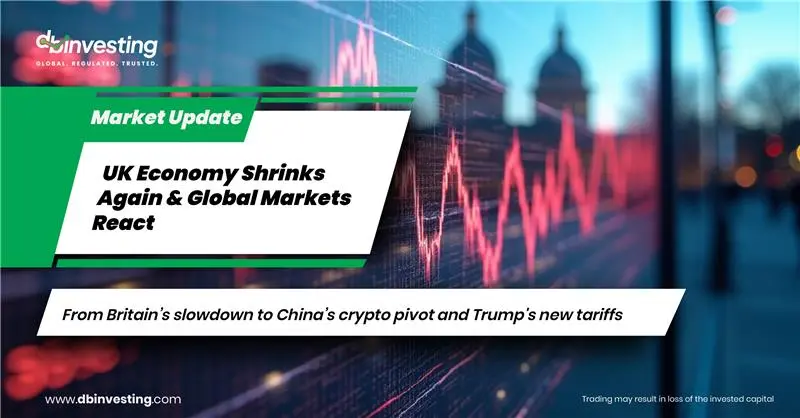From Britain’s slowdown to China’s crypto pivot and Trump’s new tariffs
UK Economy
UK Economy Contracts for Second Straight Month in May
The British economy shrank by 0.1% in May, following a sharper 0.3% contraction in April — the biggest drop since October 2023. Industrial output declined by 0.9% and manufacturing by 1.0%, failing to meet growth expectations.
The drop was linked to legal service slowdowns, rising energy bills, increased national insurance, and tariff uncertainties. On a yearly basis, GDP growth slowed to 0.7% in May from 0.9% in April.
Treasury Secretary Rachel Reeves may be forced to raise billions in taxes amid political resistance, while the Bank of England is expected to cut rates further — from 4.25% now to 3.75% by year-end.
Global Crypto Shift
China Signals Policy Shift Amid Bitcoin Surge
A key Chinese regulatory body convened this week with over 60 officials to discuss digital assets and stablecoin strategy. The move comes as Bitcoin hits record highs, surpassing $118,000, driven by strong institutional demand and favorable U.S. regulations.
China’s openness to evolving its digital currency framework marks a potentially significant policy shift.
Commodities & Tariffs
Gold Rises on Safe-Haven Demand Amid Tariff Threats
Gold prices climbed in Asian trading on Friday, supported by safe-haven demand after Donald Trump threatened to impose 35% tariffs on Canadian imports starting August 1. The geopolitical tension in the Middle East added to the demand.
Meanwhile, the U.S. dollar index rose 0.3% during Asian trading hours, and futures added 0.2%, maintaining their weekly upward trend. Platinum and gold outperformed silver this week.
Conclusion:
With the UK economy under pressure, global policy shifts in digital assets, and renewed U.S. trade tensions, investors face a complex market outlook. Staying informed is essential as central banks and governments shape the next phase of economic policy.
